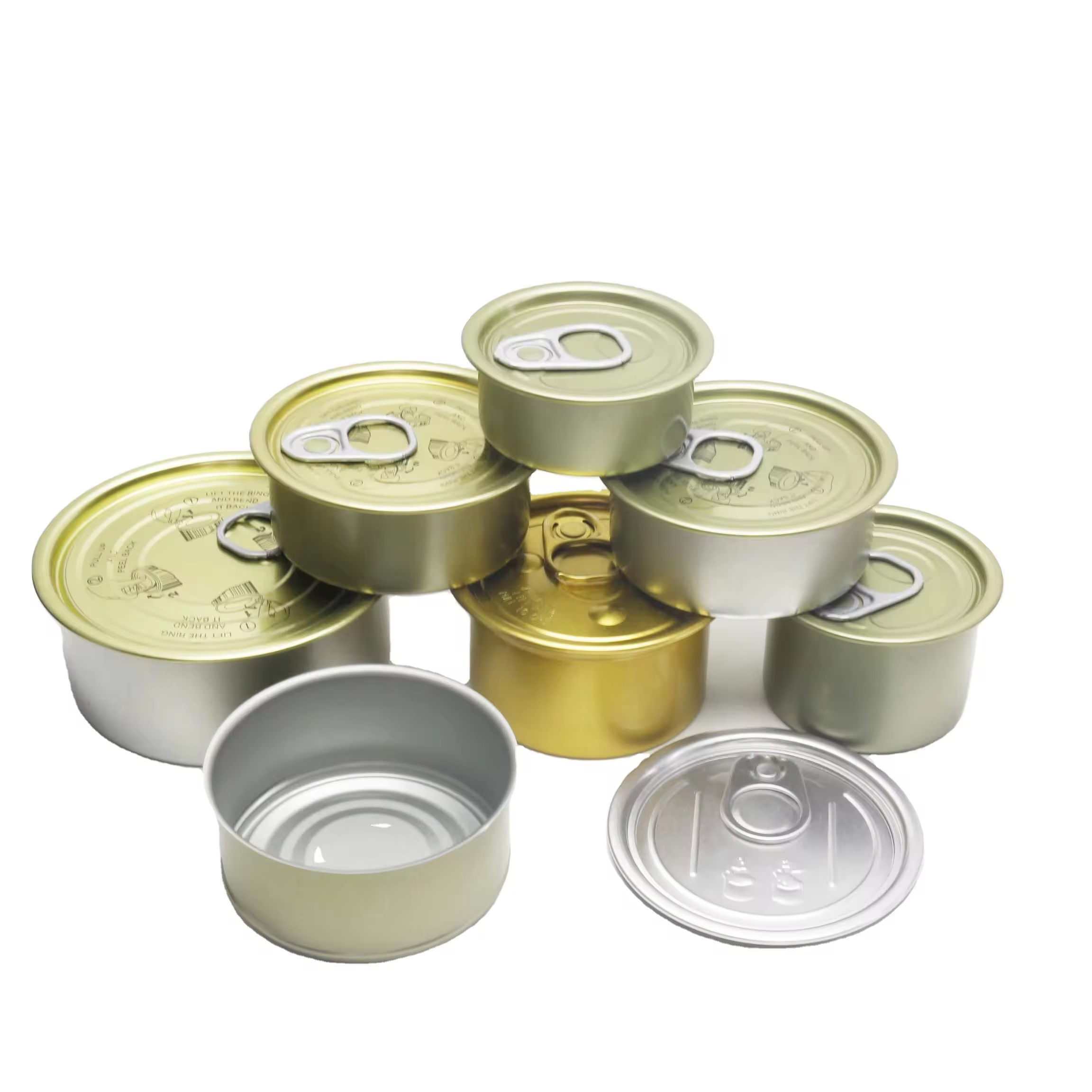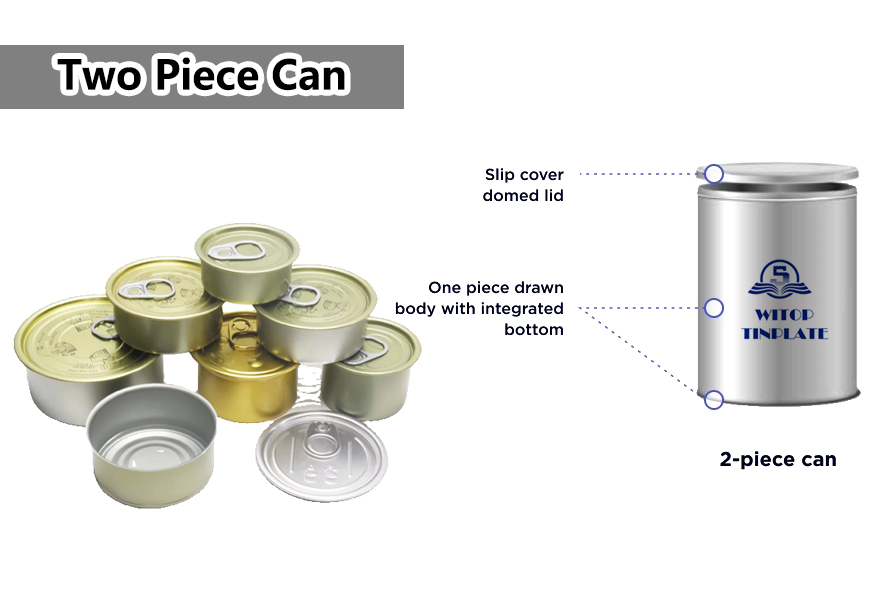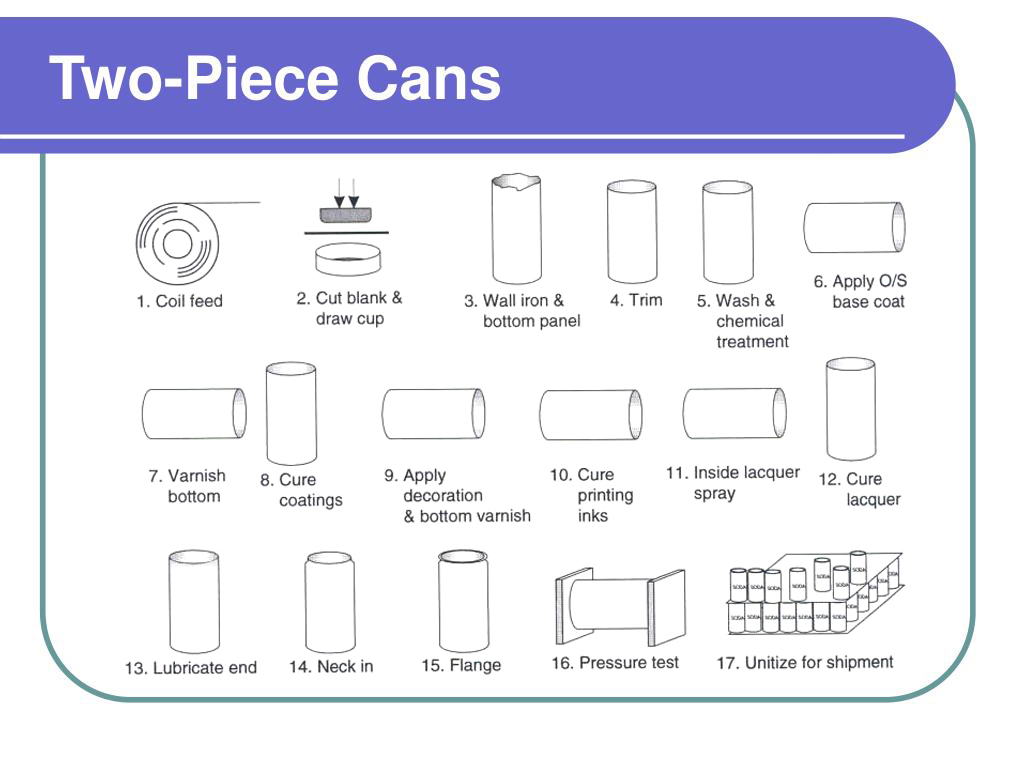What is Two-Piece cans?
The two-piece cans, also known as a 2-piece can is a type of metal container consisting of two parts, it is a popular packaging option used for various food and beverage products: the can lid and an integrated, seamless can body with a bottom. The can body is produced using advanced deep-drawing technology, where the metal sheet is stamped and formed into a predetermined cup-shaped structure. Due to this unique forming process, a two-piece can is also known as a drawn can.

History of Two Pieces can
In the 1940s, the UK applied stamping technology to can production, creating shallow-drawn aluminum alloy cans, which revolutionized the industry. In the 1960s, American companies developed DRD (Draw-Redraw) and D&I (Draw-and-Iron) can-making processes, combined with easy-open lid technology, driving the growth of the aluminum can market. By the 1970s, two-piece can technology had spread worldwide and entered China in the 1980s. Although aluminum cans were lightweight and corrosion-resistant, their high energy consumption and rising costs led the industry to shift towards steel can production. By the 1990s, steel cans gradually became the mainstream choice.
The Feature and the advance of Two Pieces can
The most important feature of two-piece drawn cans is that the sidewall and bottom are formed as a seamless, integral structure. This unique design offers numerous advantages:
1.High Hygiene Standards: The interior wall is smooth and uniform, allowing for a complete protective coating after forming. This coating effectively isolates potential metal contaminants, significantly improving the hygiene quality of the contents.
2.Enhanced Safety: With a seamless interior wall and protective coating, the risk of leakage is eliminated. Additionally, the absence of seams improves the can’s sealing reliability, ensuring high airtightness and product safety.
3.Superior Packaging Appeal: The seamless and smooth outer surface enhances printing effects, allowing designers to create attractive labels and designs. The streamlined and aesthetic appearance offers strong visual appeal.
4.Lightweight and Material-Saving: Compared to other metal cans of the same volume, two-piece cans are lighter and require less material.
5.Simple Forming Process: Depending on technical requirements, the can may be shaped in a single or multiple drawing steps. The process is fast and well-suited for automated, high-speed production.

Challenges in Production
While two-piece cans offer several advantages, they also present some challenges. The manufacturing equipment requires significant investment, and the material quality must meet higher standards. Due to mold limitations, the variety of two-piece can designs may be restricted, making it less adaptable for diverse product requirements.
How to the Manufacturing Process?
· D&I Cans: Coil shearing → Pre-stretch stamping → Multiple draw thinning steps → Bottom forming → Trimming → Cleaning and lubrication → Drying → White enamel coating → Printing → Interior coating → Drying → Necking and flanging → Leak detection
· Deep Drawn Cans: Shearing → Initial cup drawing → Multiple redraw steps → Flanging → Bottom forming → Trimming → Surface treatment → Leak detection

Structural Features
Two-piece drawn cans are produced using stamping techniques, where a round blank is progressively pressed into shape. The resulting can body features smooth, seamless sidewalls and a unified bottom. This eliminates the need for traditional seaming between the can’s body and bottom, enhancing both structural integrity and aesthetic appeal.
Most two-piece cans are designed with an easy-open structure, ensuring convenient access for consumers.
Structural Elements of Two-Piece Cans
A two-piece can consists of five main parts: the can end (lid), upper rim, can body, lower rim, and can bottom.
· Can Bottom: Primarily serves as the base to support the entire container. The bottom is typically designed with a convex shape for enhanced stability and strength.
· Lower Rim: This section connects the sidewall to the can bottom. It is often designed with a “bottom foot” to ensure structural integrity and provide an appealing appearance.
· Sidewall: The sidewall is smooth and flat, suitable for decorative coatings and printing. The design must ensure sufficient vertical compression strength (also known as column strength), with a minimum strength value of 1330N.
· Upper Rim: This is the sealing area where the can end is attached to the can body. To reduce material costs, two-piece can lids are usually smaller in diameter. Therefore, the upper rim is often necked to reduce the can’s opening size to match the lid. Necking designs include double-necking, triple-necking, and spin-necking.
· Can End (Lid): The lid design can vary based on the product’s requirements. For beverage cans, standard easy-open ends are commonly used.
Bottom Structure of Two-Piece Cans
Beverage cans are often subject to high internal pressure, requiring the can bottom to have a minimum bend strength of 0.58–0.62 MPa. Early designs used thicker materials to meet this strength requirement. However, as material thickness decreased over time to reduce costs, the can bottom design evolved to include more complex structural features to maintain strength and durability.
Upper Rim Design of Two-Piece Cans
Early two-piece cans adopted simple necking designs. As the diameter of can lids decreased further, the can body opening also required additional narrowing. Since the 1980s, designs such as double-necking, triple-necking, and quadruple-necking have emerged.
The British company Metal Box introduced the spin-necking technique, which offers significant processing advantages. In recent years, spin-necking has become increasingly popular in two-piece can manufacturing.
www.jiangyinforward.com
Jiangyin Forward Supply Chain Management Co.,Ltd.
